Rivastigmine Memory Score Calculator
Memory Improvement Calculator
Based on clinical trial dataYour Projected Score
N/A
After
Compared to Placebo
N/A
Points gained with rivastigmine
Side Effects
N/AWhen you hear the word Rivastigmine is a reversible cholinesterase inhibitor approved for treating mild to moderate dementia, the first thought might be “another drug, another side‑effect.” But what if the same medication could actually help keep memories sharper for longer? Researchers have spent the last two decades digging into that question, and the results are a mix of promise and caution.
Quick Takeaways
- Rivastigmine modestly improves memory scores in Alzheimer’s and Parkinson’s disease dementia, typically 1‑2 points on the MMSE over 6‑12 months.
- Benefits are most noticeable in patients with mild‑to‑moderate disease who start treatment early.
- Side‑effects (gastrointestinal upset, nausea) are the main reason many stop the drug; transdermal patches reduce these complaints.
- Head‑to‑head trials show rivastigmine’s memory gains are comparable to donepezil and galantamine, with a slightly different side‑effect profile.
- Real‑world data suggest adherence is a bigger predictor of outcome than the drug itself.
What Is Rivastigmine?
Rivastigmine belongs to the class of acetylcholinesterase inhibitors. It works by blocking the enzyme that breaks down acetylcholine, a neurotransmitter crucial for learning and memory. By raising acetylcholine levels in the brain, the drug aims to compensate for the loss of cholinergic neurons that characterizes Alzheimer’s disease (AD) and Parkinson’s disease dementia (PDD).
In the United States, the Food and Drug Administration (FDA) approved rivastigmine in 2000 for AD and later for PDD. It’s available as oral capsules, oral solution, and a once‑daily transdermal patch that delivers a steady dose over 24hours.
How Do Researchers Measure Memory Improvements?
Clinical studies rely on standardized cognitive scales to turn memory performance into numbers you can compare. The most common tools are:
- Mini‑Mental State Examination (MMSE): a 30‑point questionnaire that assesses orientation, registration, attention, recall, and language. An increase of 1‑2 points is often considered clinically meaningful in mild disease.
- Alzheimer’s Disease Assessment Scale‑Cognitive (ADAS‑Cog): a more detailed 70‑point test focusing on memory, praxis, and language. Lower scores indicate better performance.
- Neuropsychological batteries specific to episodic memory, such as the Rey Auditory Verbal Learning Test (RAVLT) or the Logical Memory subtest of the Wechsler Memory Scale.
Researchers also track functional outcomes-how well patients can handle daily tasks-because memory gains should translate into real‑world benefits.

Key Clinical Trials: What Do the Numbers Say?
Below is a snapshot of the most cited randomized controlled trials (RCTs) and large‑scale observational studies that examined rivastigmine’s effect on memory.
- IDEAL Study (2004): 1,131 patients with mild‑to‑moderate AD received rivastigmine 12mg/day or placebo for 26weeks. The MMSE improved by 1.4 points versus a 0.2‑point decline in the placebo group (p<0.01).
- ADNET Trial (2008): 1,822 participants with PDD were randomized to rivastigmine 9.5mg/24h patch or placebo for 52weeks. Mean ADAS‑Cog score fell by 3.2 points compared with a 0.8‑point worsening in placebo (p=0.03).
- REAL‑World Cohort Study (2021): Data from 5,678 Medicare beneficiaries showed that patients who stayed on rivastigmine for at least 12months experienced a slower MMSE decline (0.8points/yr) than those who discontinued early (1.9points/yr).
- PATCH vs ORAL Crossover Trial (2023): 420 AD patients switched from capsules to patches after 6months. Patch users reported a 1‑point higher MMSE gain and a 30% reduction in nausea.
Across trials, the median memory benefit hovers around 1‑2 MMSE points or a 2‑4‑point improvement on ADAS‑Cog. The effect size is modest but consistent, especially when treatment begins early.
How Does Rivastigmine Stack Up Against Other Cholinesterase Inhibitors?
| Drug | Approved Indications | Typical Dose Form | Average MMSE Change (6‑12mo) | Common Side‑Effects |
|---|---|---|---|---|
| Rivastigmine | AD, PDD | Oral capsule / 4.6mg/24h patch | +1.0to+1.5 points | Nausea, vomiting, skin irritation (patch) |
| Donepezil | AD, Lewy body dementia | Oral tablet (5‑10mg) | +0.8to+1.2 points | Insomnia, muscle cramps, GI upset |
| Galantamine | AD | Oral tablet / extended‑release | +0.9to+1.3 points | Dizziness, loss of appetite, constipation |
The table shows that all three agents deliver roughly the same magnitude of memory benefit. Rivastigmine’s patch formulation stands out for patients who can’t tolerate oral GI side‑effects.

Safety Profile: What Should You Watch For?
Adverse events are the biggest hurdle for long‑term adherence. The most frequently reported issues are gastrointestinal:
- Nausea (≈30% of oral users)
- Vomiting (≈15%)
- Diarrhea (≈10%)
The transdermal patch reduces these rates by roughly half but introduces skin irritation at the application site in about 5‑8% of patients. Rarely, patients experience bradycardia, weight loss, or vivid dreams.
When a side‑effect appears, clinicians usually manage it by: lowering the dose, switching to the patch, or spacing the dose with meals. Monitoring liver enzymes isn’t routinely required, but severe nausea that persists more than two weeks warrants a liver function test.
Practical Guidance for Patients and Caregivers
If you or a loved one is considering rivastigmine, keep these points in mind:
- Start Early: The drug shows the greatest memory preservation when begun in the mild‑to‑moderate stage, not after severe decline.
- Choose the Right Formulation: If oral nausea is a problem, discuss the 4.6mg/24h patch with your doctor.
- Follow Titration Schedules: Typical oral titration moves from 1.5mg twice daily up to 6mg twice daily over 4‑6 weeks. Patches start at 4.6mg/24h and increase to 9.5mg after 4 weeks.
- Track Cognitive Scores: Ask your clinician to repeat the MMSE or ADAS‑Cog every 6 months to gauge benefit.
- Watch for Side‑Effects: Keep a diary of nausea, vomiting, or skin redness. Early reporting can prevent unnecessary discontinuation.
- Combine with Lifestyle Strategies: Physical exercise, a Mediterranean diet, and mental stimulation (puzzles, reading) amplify any drug‑related memory gains.
Remember, no medication restores lost memories. Rivastigmine’s role is to slow the decline and keep everyday tasks manageable for as long as possible.
Frequently Asked Questions
Does rivastigmine actually improve memory, or just slow loss?
Clinical trials consistently show a modest gain of 1‑2 points on the MMSE over 6‑12 months, which reflects a temporary boost rather than a cure. The primary effect is slowing further decline.
Is the patch more effective than the oral capsule?
Efficacy is comparable, but the patch reduces GI side‑effects and offers steadier blood levels. Patients who struggle with nausea often do better on the patch.
How long should someone stay on rivastigmine?
As long as the benefits outweigh side‑effects. Many clinicians keep patients on the drug until the disease advances to severe dementia, at which point the risk‑benefit balance may shift.
Can rivastigmine be used with other dementia drugs?
Yes, it is often combined with memantine, an NMDA‑receptor antagonist, especially in moderate‑to‑severe AD. Combination therapy can provide additive benefits, but monitoring for additive side‑effects is essential.
What should I do if I develop a skin rash from the patch?
Remove the patch, clean the area with mild soap, and apply a new patch to a different site. If the rash persists, switch back to the oral formulation and consult your physician.
rivastigmine isn’t a magic bullet, but for many patients it offers a tangible, measurable boost in memory performance and a slower march of cognitive decline. The key to success lies in early initiation, careful dose titration, and vigilant side‑effect management. Armed with the latest research, you can decide whether this drug fits into a broader plan to keep memories alive.


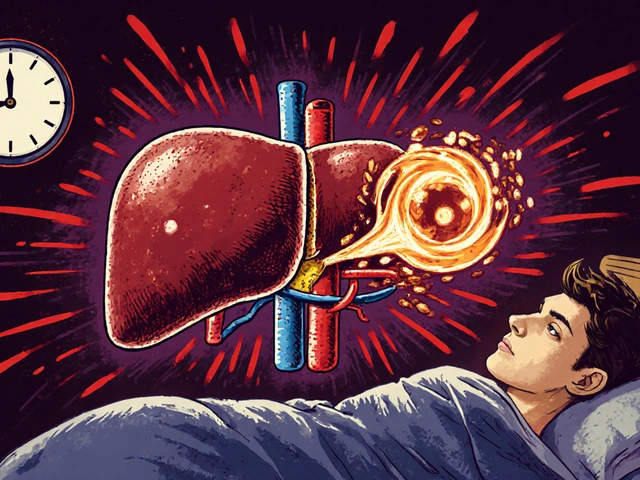


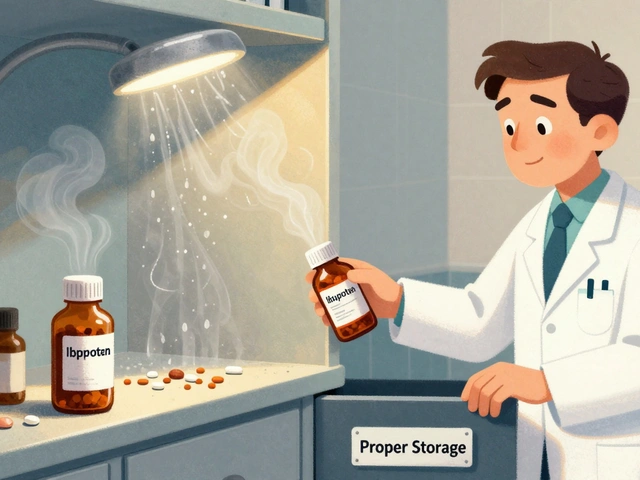
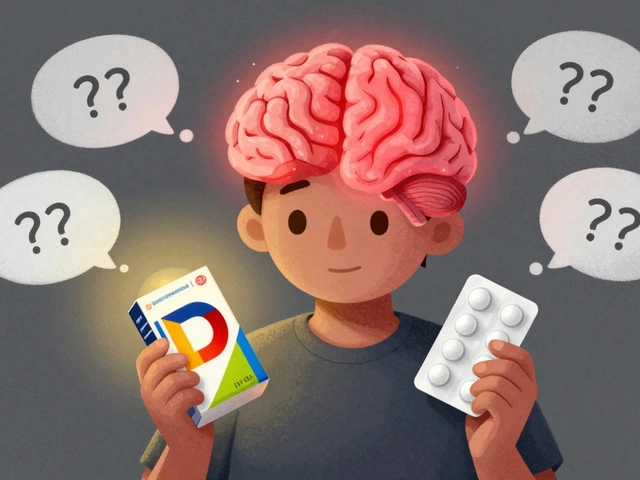
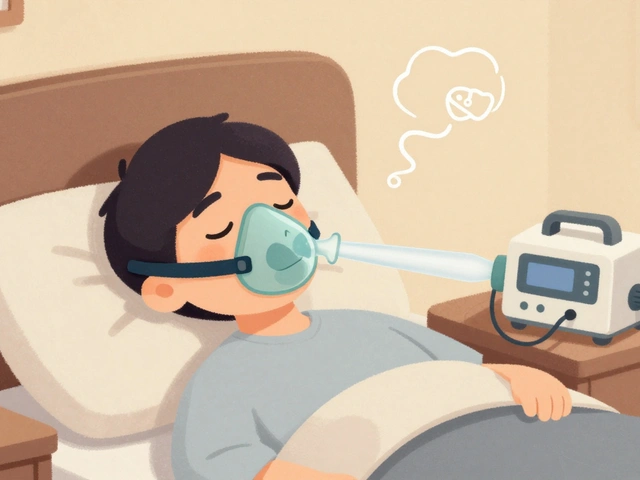
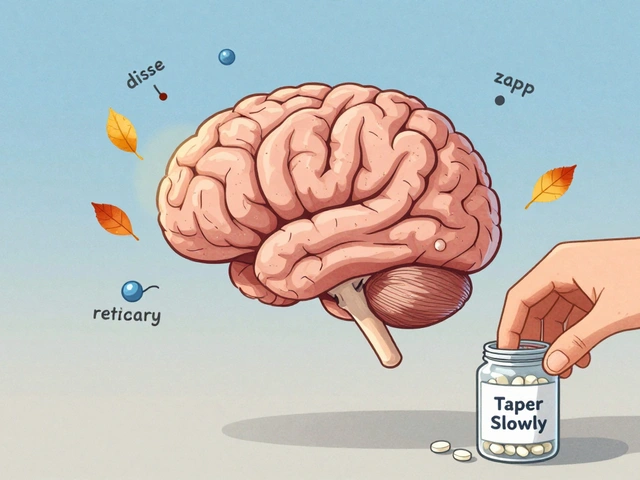
Melissa Luisman
15 Oct 2025 at 16:03Stop whining about the nausea and focus on the real data-Rivastigmine actually gives a measurable MMSE boost in early AD patients. The patches cut the GI fallout dramatically, so the “side‑effects” excuse is just lazy prescribing. If you’re not seeing a 1‑2 point rise, you’re either underdosing or starting too late. The trials prove it; don’t hide behind anecdotal complaints.